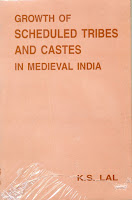 |
| Kunti abandoning Karna (image credit: http://www.dollsofindia.com/) |
Karna was abandoned almost immediately after his birth. His mother, Kunti, "flung" (ch 104, Adi Parva) him into the river, where he was found by Adhiratha, adopted by his wife Radha, and grew up the son of a charioteer. He later became the lifelong friend of Duryodhana, the king of Anga, and a mortal enemy of Arjuna.
A question comes to mind - why did Kunti need to fling her first-born son into the water? It was because of a boon granted by the "fearsome" sage, Durvasa. His boon to Kunti was thus - "Whichever gods you summon through the use of this mantra, will grant you sons through their grace." Durvasa had granted this boon to Kunti because "he knew that she would face the dharma that is indicated for times of distress." Once Kunti had this boon, she became "curious." Curiosity led her to invoke the boon, summon Arka (the sun god), who placed an embryo in her womb. Thus Karna was born, and almost immediately thereafter, abandoned by his mother.
